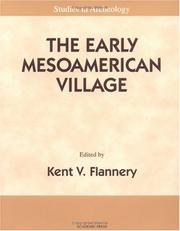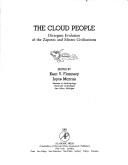| Listing 1 - 10 of 32 | << page >> |
Sort by
|

ISBN: 0122598520 Year: 1976 Publisher: New York Academic Press
Abstract | Keywords | Export | Availability | Bookmark
 Loading...
Loading...Choose an application
- Reference Manager
- EndNote
- RefWorks (Direct export to RefWorks)
Book
Year: 1976 Publisher: New York, San Francisco, London Academic Press
Abstract | Keywords | Export | Availability | Bookmark
 Loading...
Loading...Choose an application
- Reference Manager
- EndNote
- RefWorks (Direct export to RefWorks)
Book
ISBN: 9780674416772 Year: 2014 Publisher: Cambridge (Mass.) Harvard University Press
Abstract | Keywords | Export | Availability | Bookmark
 Loading...
Loading...Choose an application
- Reference Manager
- EndNote
- RefWorks (Direct export to RefWorks)
Book
ISBN: 9780500050781 0500050783 Year: 1996 Publisher: New York, N.Y. : Thames and Hudson,
Abstract | Keywords | Export | Availability | Bookmark
 Loading...
Loading...Choose an application
- Reference Manager
- EndNote
- RefWorks (Direct export to RefWorks)
"Important new synthesis of the Paleoindian through classic periods. Develops an action theory framework to explain formation of the first Zapotec State and the founding and growth of Monte Albán. Written in an accessible style and exceptionally well illustrated with drawings and photographs (some color) on glossy paper"--Handbook of Latin American Studies, v. 57.
Zapotec Indians --- Land settlement --- Excavations (Archaeology) --- Zapotèques --- Colonisation intérieure --- Fouilles (Archéologie) --- Antiquities. --- Politics and government. --- Antiquités --- Politique et gouvernement --- Oaxaca Valley (Mexico) --- Oaxaca, Vallée d' (Mexique)

ISBN: 0122598601 Year: 1983 Publisher: New York : Academic Press,
Abstract | Keywords | Export | Availability | Bookmark
 Loading...
Loading...Choose an application
- Reference Manager
- EndNote
- RefWorks (Direct export to RefWorks)
Zapotec Indians --- Mixtec Indians --- Indians of Mexico --- Zapotèques --- Mixtèques --- Indiens d'Amérique --- Antiquities --- Antiquités --- Oaxaca Valley (Mexico) --- Mexico --- Oaxaca, Vallée d' (Mexique) --- Mexique
Book
ISBN: 9780915703913 0915703912 Year: 2019 Publisher: Ann Arbor, Michigan Museum of Anthropology, University of Michigan
Abstract | Keywords | Export | Availability | Bookmark
 Loading...
Loading...Choose an application
- Reference Manager
- EndNote
- RefWorks (Direct export to RefWorks)
Indians of Mexico --- Excavations (Archaeology) --- Mixtec Indians --- Zapotec Indians --- Antiquities --- Oaxaca Valley (Mexico) --- San José Mogote (Mexico) --- Antiquities. --- Social life and customs.
Book
ISBN: 0674064976 0674069730 9780674069732 9780674064973 9780674064690 0674064690 Year: 2012 Publisher: Cambridge, Mass. Harvard University Press
Abstract | Keywords | Export | Availability | Bookmark
 Loading...
Loading...Choose an application
- Reference Manager
- EndNote
- RefWorks (Direct export to RefWorks)
Prehistoric peoples. --- Social evolution. --- Social stratification. --- Anthropology, Prehistoric. --- Equality. --- Human evolution.
Book
Abstract | Keywords | Export | Availability | Bookmark
 Loading...
Loading...Choose an application
- Reference Manager
- EndNote
- RefWorks (Direct export to RefWorks)
Book
ISBN: 1951538781 Year: 2024 Publisher: Ann Arbor, Michigan : University of Michigan Museum of Anthropological Archaeology,
Abstract | Keywords | Export | Availability | Bookmark
 Loading...
Loading...Choose an application
- Reference Manager
- EndNote
- RefWorks (Direct export to RefWorks)
Gheo-Shih, an Archaic site in the Valley of Oaxaca, was a 1.5-hectare open-air macroband camp near the Mitla River. It was repeatedly occupied in the summer rainy season during the period (cal.) 7500-4000 BC, possibly by 25-50 people. At other times of the year the local population dispersed in smaller, family-sized groups, occupying microband camps in caves and rockshelters. The available macrofossil and palynological data suggest that between 5000 and 4000 BC, the inhabitants were cultivating maize, squash, gourds, and (possibly) runner beans, while continuing to collect wild plants and hunt deer, rabbit, and mud turtle. This site report describes the discovery of Gheo-Shih and the subsequent research carried out there: a systematic surface pickup, a series of test pits, targeted excavations, and analysis of the materials recovered.
Excavations (Archaeology) --- Antiquities, Prehistoric --- Prehistoric peoples --- Antiquities. --- Oaxaca Valley (Mexico) --- Antiquities, Prehistoric.
Book
ISBN: 1598747835 9781598747836 1598744690 1315418673 1315418681 Year: 2009 Publisher: Walnut Creek, Calif. : Left Coast Press, Inc.,
Abstract | Keywords | Export | Availability | Bookmark
 Loading...
Loading...Choose an application
- Reference Manager
- EndNote
- RefWorks (Direct export to RefWorks)
One of the classic works of archaeology, The Early Mesoamerican Village was among the first studies to fully embrace the processual movement of the 1970's. Dancing around an ongoing dialogue on methods and goals between the Real Mesoamerican Archaeologist, the Great Synthesizer, and the Skeptical Graduate Student, it is both a seminal tract on scientific method in archaeology and a series of studies on formative Mesoamerica. It critically evaluates techniques for excavation, sampling of sites and regions, and stylistic analysis, as well as such theoretical factors of explanation as popular...
Indians of Mexico --- Indians of Central America --- Extinct cities --- Abandoned cities --- Abandoned villages --- Buried cities --- Cities and towns, Ruined, extinct, etc. --- Deserted cities --- Deserted villages --- Ruined cities --- Sunken cities --- Cities and towns --- Antiquities. --- Mexico --- Central America --- Central America -- Antiquities. --- Extinct cities -- Central America. --- Extinct cities -- Mexico. --- Indians of Central America -- Antiquities. --- Indians of Mexico -- Antiquities. --- Mexico -- Antiquities.
| Listing 1 - 10 of 32 | << page >> |
Sort by
|

 Search
Search Feedback
Feedback About UniCat
About UniCat  Help
Help News
News